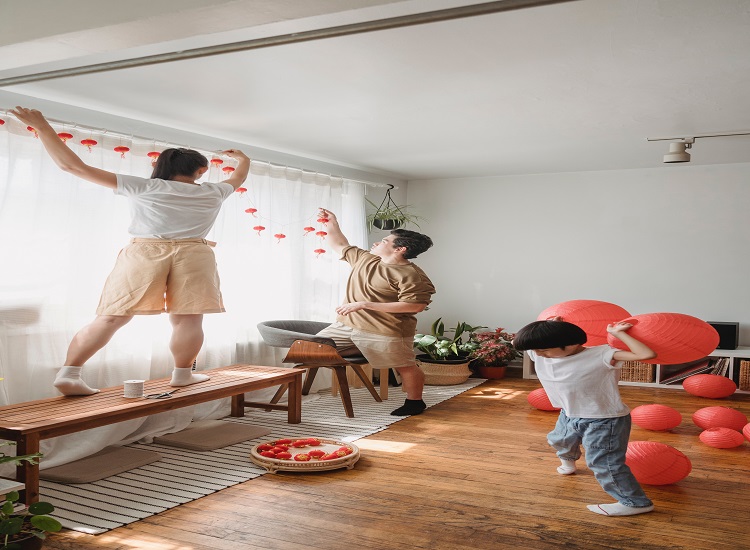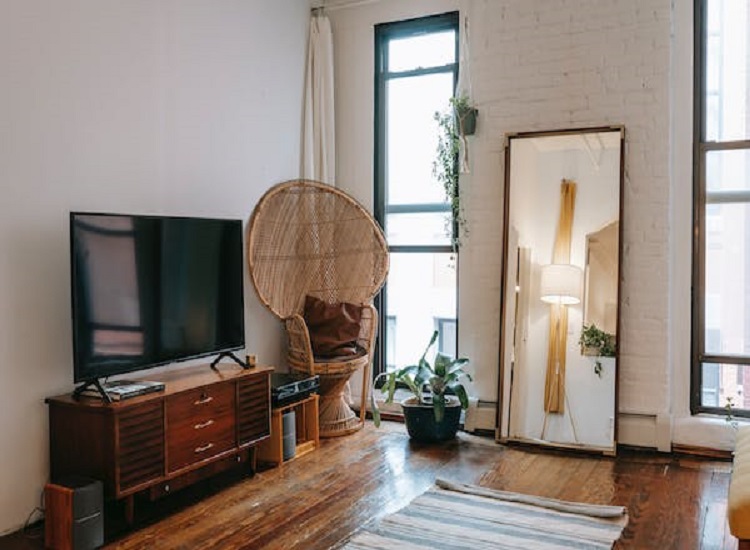Most of us already have some furnishings from a past life and have mixed emotions about them. Either we feel lucky to be starting with something or wish we could start from scratch. But most people can’t imagine getting rid of a perfectly good sofa bed. This is something you’ll have to solve with your conscience and pocketbook. If you can justify getting rid of the things you don’t want to drag with you, do so. If not, find an acceptable way to use them. Don’t think this means resigning yourself to a still usable chair that you hate. Some things have the potential for a redo and many such items have turned out to be rather interesting pieces. Look at everything you have with this in mind.
For example, I had a large Berber carpet that was too dull-looking in my living room. I had it cleaned, cut down and rebound for use in a den. Most of the furniture covers it, and it just fades into the background. I ended up with an affordable floor covering in the den, long before I thought I’d have the money allocated for this item, which was a very low priority on my list.
On the other hand, a friend of mine who is a bachelor just moved into his first apartment, one side of a duplex house. It is tiny and has no distinguishing characteristics. The first floor consists of one large open room that contains the kitchen, dining area, and living room. He loves antiques, but the apartment came furnished with, among other things, a very large, Danish modern bookcase/storage unit. He convinced his landlord to remove most of the furniture so the bookcase could be positioned in such a way as to become a divider between the living room and kitchen/eating areas. Serving as a half wall, it stores all the knickknacks and interesting accessories he collects, along with an eclectic assortment of books. The top is filled to the ceiling with a collection of old bottles interspersed with hanging ivy plants. The rest of the space is decorated with wonderful antique furniture and the kitchen isn’t in constant view. Since he loves to cook and have dinner parties, the use of the large piece of undesirable furniture became an asset.
I Have, I Need
Make a page heading in your notebook called “What I Have” and another called “What I Need.” Then list the things you have, followed by a list of the things you need.
Carefully review the things you have, and assign rooms in which they will be placed. Note whether they need transforming before becoming acceptable. For example, if you have a sofa, determine whether or not you can use it as is, or if it will present a problem because everything must revolve around it. Can it be slipcovered? Do this with all the things you own. Assess the value of using each item. Decide if it’s a great piece and you can build a room around it, if it’s passable enough to make it work, or if you can afford to get rid of it. Keep in mind that some items can be used for purposes other than originally intended. For example, my bachelor friend inherited two small, square commodes made of beautiful cherry wood. He needed a coffee table, and while one commode was too small for this purpose, two placed side by side were perfect and provided more flexibility than one solid piece of furniture.
Indicate which items you will keep for now, but would like to replace at a later time. Assign numbers in descending order for each piece you will replace when you can afford to do so. Once you’ve made a master plan, you can refine it by eliminating the least important purchases in order to get the things that mean the most to you. In this way, you’re always doing research. When shopping for a sofa, for example, in the back of your mind you know you’ll replace the kitchen table next. Keep a casual eye open for this item, without getting into it in earnest. When you actually start to look at tables, you’ll be surprised at how much you’ve unconsciously taken in.




